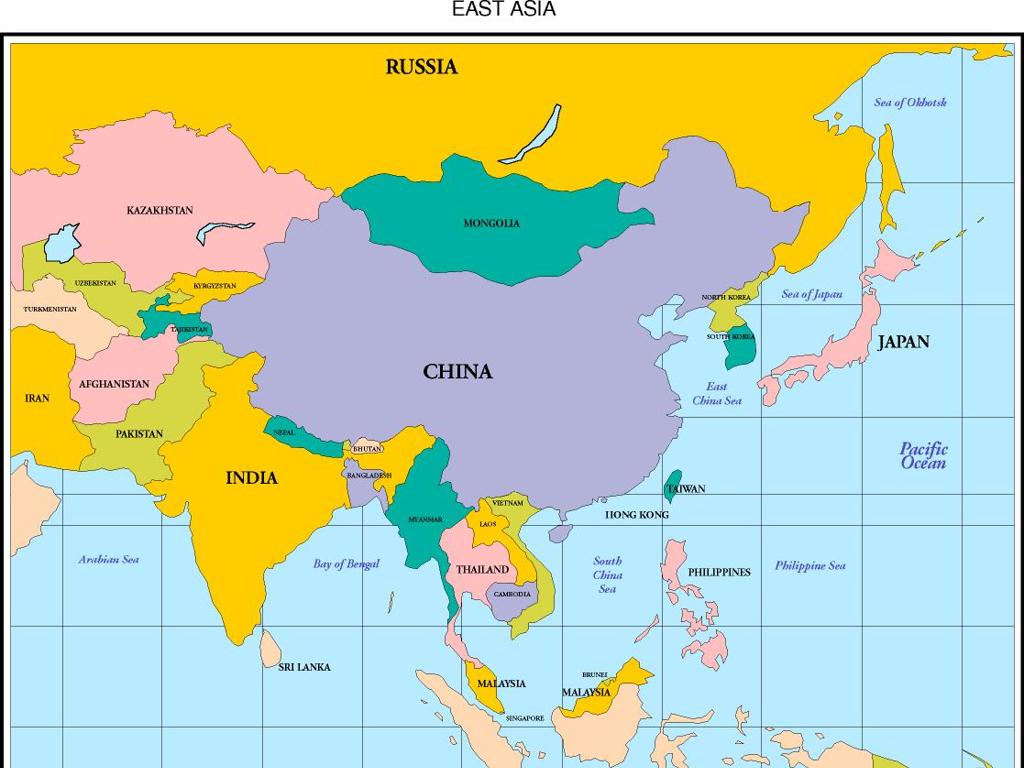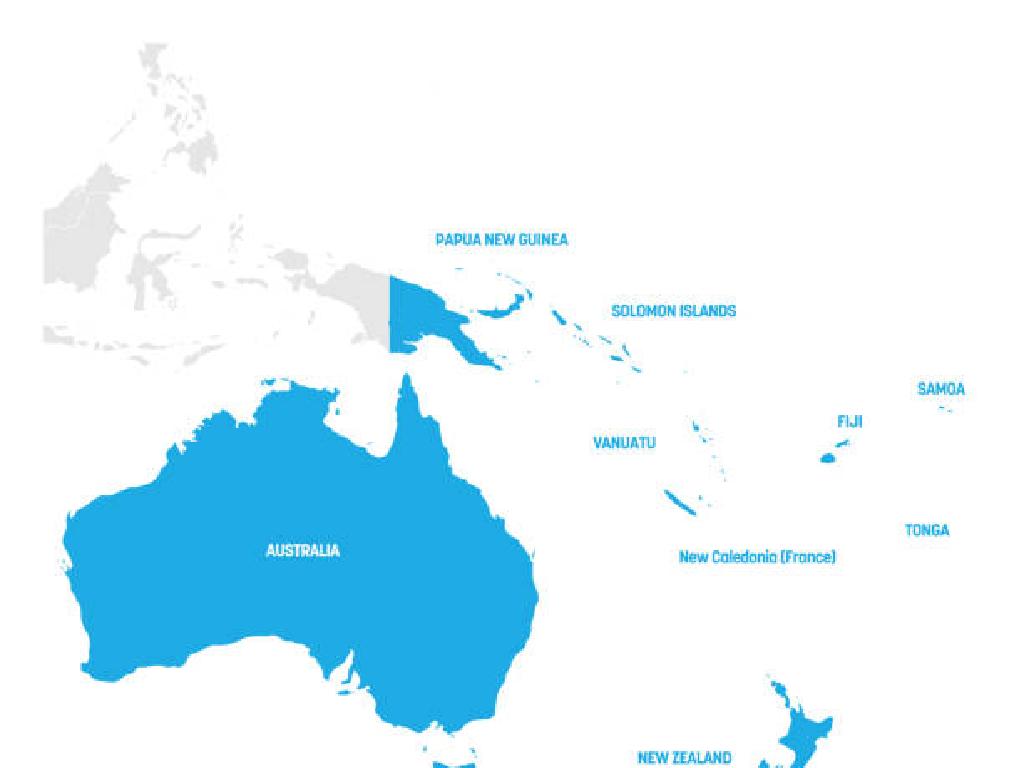Identify And Select Countries Of Africa: Region 5
Subject: Social studies
Grade: Sixth grade
Topic: Africa: Geography
Please LOG IN to download the presentation. Access is available to registered users only.
View More Content
Exploring Africa: Region 5 Geography
– Africa’s vast landscape
– Second largest continent with diverse terrain
– The concept of regions
– Africa is divided into regions for easier study
– Focus on Region 5
– Region 5 includes countries like South Africa and Namibia
– Significance of regional study
– Understanding regions helps in learning about culture, climate, and history
|
Begin the presentation by highlighting Africa’s size and diversity, emphasizing its position as the second-largest continent with a wide variety of landscapes and ecosystems. Explain the division of Africa into smaller regions, which makes it easier to study and understand the continent’s complexity. Today’s focus will be on Region 5, which encompasses the southern part of Africa, including notable countries such as South Africa, Namibia, and others. Discuss the importance of studying Africa by regions, as it allows students to delve into the specific cultural, climatic, and historical aspects of different areas. Encourage students to think about how the geography of a region can influence the lifestyle and culture of its inhabitants.
Exploring Africa: Region 5
– Definition of Region 5
– Region 5 includes countries in Southern Africa.
– Significance of regional divisions
– Regional divisions help in understanding cultural, political, and geographical distinctions.
– Countries within Region 5
– Examples: South Africa, Zimbabwe, Botswana
– Geographical features of Region 5
– Features include the Kalahari Desert, Victoria Falls, and diverse wildlife.
|
This slide introduces students to Region 5 of Africa, which encompasses the southern part of the continent. It’s important to explain that Africa is divided into regions for easier study and understanding of its vast diversity. Discuss the significance of these divisions in terms of geography, culture, and politics. Highlight key countries in Region 5, ensuring to point out major geographical features such as deserts, rivers, and significant landmarks. Use maps and images to help students visualize the region. Encourage them to research more about the countries and their unique characteristics for a deeper understanding.
Exploring Africa: Region 5 Countries
– List Region 5 countries
– Identify countries like Angola, Namibia
– Capitals and languages
– Luanda is Angola’s capital, Portuguese is spoken
– Historical highlights
– Angola gained independence in 1975
– Cultural insights
– Explore unique traditions and practices
|
This slide aims to introduce students to the countries of Region 5 in Africa, which includes nations such as Angola and Namibia. Students will learn to identify each country and its geographical location on the map. They will also learn about the capital cities and official languages, which are essential for understanding the cultural and administrative aspects of these countries. A brief history of each country, focusing on key events like Angola’s independence, will provide context to their current status. Additionally, discussing cultural elements will give students a glimpse into the rich traditions and diversity within Region 5. Encourage students to conduct further research on one country for a deeper understanding.
Exploring Africa: Region 5 Geography
– Major landforms and waters
– Mountains, rivers, and lakes shape the land.
– Climate zones of Region 5
– From deserts to rainforests, climate varies.
– Unique ecosystems
– Home to diverse flora and fauna.
– Region 5’s natural resources
– Minerals, forests, and wildlife are abundant.
|
This slide aims to give students an overview of the physical geography of Africa’s Region 5. Discuss the major landforms such as mountains and rivers, and the significant bodies of water that are characteristic of the region. Explain the different climate zones found within Region 5, ranging from arid deserts to lush rainforests, and how these climates affect the living conditions. Highlight the unique ecosystems that exist within these climates, emphasizing the diversity of plant and animal life. Lastly, touch on the natural resources that are found in Region 5, such as valuable minerals, extensive forests, and unique wildlife, and discuss their importance to the local economies and global markets. Encourage students to think about how these geographical features influence the lives of the people living in Region 5.
Cultural Overview of Africa: Region 5
– Diversity in Region 5 cultures
– Region 5 includes a variety of ethnic groups, each with unique customs.
– Shared traditions in Region 5
– Despite diversity, some traditions like music and storytelling are common.
– Culture’s role in geography
– Understanding local cultures helps explain population distribution and regional relationships.
|
This slide aims to give students an understanding of the cultural diversity within Africa’s Region 5. Highlight the variety of ethnic groups present and discuss how each group contributes to the region’s rich cultural tapestry. Emphasize common traditions such as music, dance, and storytelling, which play a significant role in unifying these diverse cultures. Explain how culture affects geographical understanding, influencing factors like settlement patterns, land use, and inter-regional relationships. Encourage students to think about how culture in their own community influences their daily lives and compare this to the cultures in Region 5 of Africa.
Economic Activities in Africa: Region 5
– Agriculture’s role in Region 5
– Farming is key; crops vary with climate.
– Geography’s impact on economy
– Terrain and climate shape economic choices.
– Region 5’s goods and services
– Cocoa from Ghana, oil from Nigeria.
– Trade and industry significance
– Markets and factories boost local economies.
|
This slide aims to explore the various economic activities within Africa’s Region 5, emphasizing the importance of agriculture, the influence of geography on economic practices, and the types of goods and services produced in the region. Students should understand how the physical landscape, including climate and terrain, can dictate the agricultural products that are viable, as well as how these factors influence trade and industrial development. Highlight key exports like Ghana’s cocoa and Nigeria’s oil to provide tangible examples. Discuss how trade routes and local industries contribute to the economy. Encourage students to think about how the geography of their own region influences the economy and compare it with Africa’s Region 5.
Interactive Map Quiz: Countries of Africa
– Engage with a map quiz game
– Identify African countries and capitals
– Locate and name countries like Nigeria (Abuja) and Kenya (Nairobi)
– Match flags to countries
– Connect the flag to its country, e.g., the green, yellow, and red flag to Cameroon
– Reflect on what you’ve learned
|
This interactive map quiz is designed to reinforce the students’ knowledge of African geography. It will help them to visually associate countries with their capitals and national flags. Provide students with a map of Africa and flags of the countries in region 5. Encourage them to work in pairs or small groups to foster collaboration. As an extension, ask students to share interesting facts they’ve learned about each country during the quiz. This activity will not only test their recall but also enhance their memorization skills and geographical awareness.
Class Activity: Explore Region 5 of Africa
– Select a country from Region 5
– Research facts, places, and culture
– Look for unique traditions, landmarks, and history
– Create a travel brochure
– Include images, fun facts, and reasons to visit
– Present your brochure to the class
– Share what you’ve learned and inspire others to explore
|
This activity is designed to help students engage with the geography and culture of Africa’s Region 5. Students will choose a country within this region, conduct research, and compile their findings into an attractive travel brochure. Encourage them to look for information on local customs, famous landmarks, and cultural practices. They should also consider what makes their chosen country a desirable travel destination. This will help them understand the diversity within the African continent and appreciate the uniqueness of each country. Provide resources such as access to the library, internet, and travel magazines for their research. Once completed, students will present their brochures, practicing their speaking skills and sharing knowledge with peers. This activity fosters creativity, research skills, and cultural awareness.
Wrapping Up: Africa’s Region 5 & Your Travel Brochure
– Recap of Region 5’s geography
– Finish your travel brochure for homework
– Include facts, images, and attractions of a country in Region 5
– Share your brochure next class
– Be prepared to present your brochure and discuss your chosen country
– Reflect on what you’ve learned
– Think about the culture, climate, and geography you’ve explored
|
As we conclude today’s lesson, remind students of the key points discussed about Region 5 of Africa. Encourage them to finalize their travel brochures, incorporating the geographical and cultural aspects they’ve learned. The homework is designed to reinforce their knowledge and allow for creativity. In the next class, students will have the opportunity to present their brochures, which will help them practice public speaking and share insights with their peers. This activity also serves to deepen their understanding of the diversity within Africa’s regions. Provide guidance on what to include in their brochures and encourage them to be creative with the design and content.






